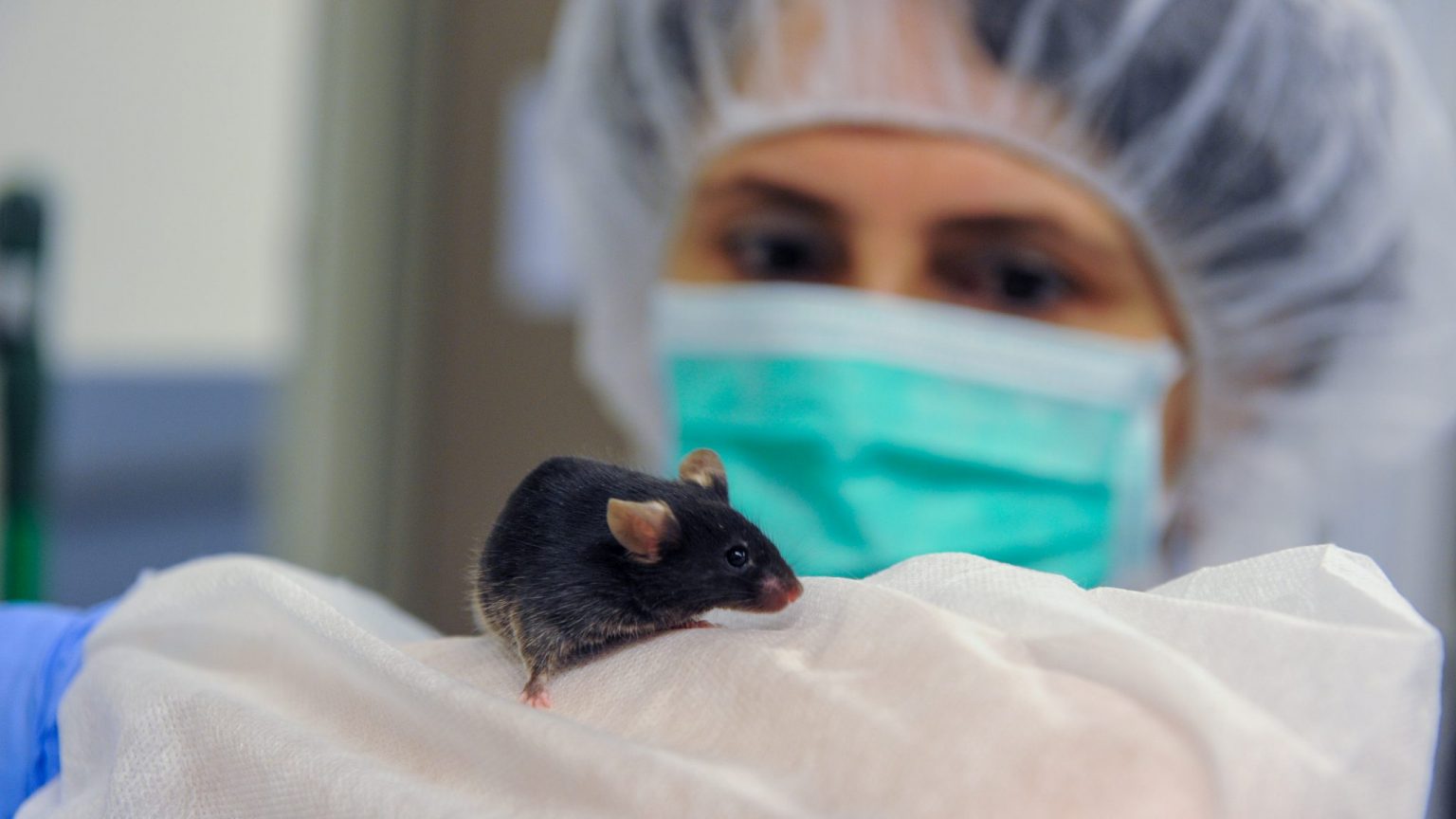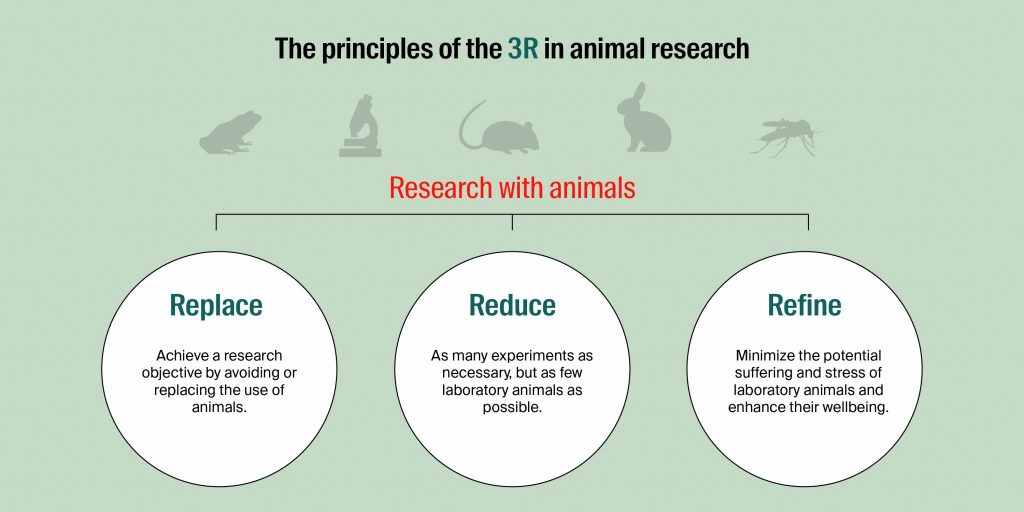
EPFL promotes the use of gentle handling techniques, and trains animal caretakers and experimenters to avoid tail-handling whenever possible. © Bruno Marquis
The principles of the 3Rs (Replacement, Reduction, Refinement) were first described by William Russell and Rex Burch in 1959. Today, they constitute the guiding principles for best practice and humane animal experimentation. They are embedded in Swiss and international legislations.
EPFL is committed to the principles and advancement of the 3Rs in research, innovation, and education. EPFL is also a founding member of the Swiss 3R competence center (3RCC).
Describes methods and approaches that permit a given purpose to be achieved by avoiding or replacing the use of animals. Full replacement aims to replace the use of all animal species and products of animal origin. Partial replacement circumvents the use of live animal species that are thought to be capable of feeling pain.
Example:
At EPFL, we research new models for in vitro research. For example, the group of Professor Lütolf develops methods for guiding stem cells self-assembly into miniature organ-mimicking tissues called organoids. Beyond the scientific interest of understanding how cells interact with each other, this research also offers exciting prospects for the development of in vitro methods for testing drugs, by using organoids rather than animal organs or even whole animals.
Refers to methods for obtaining comparable levels of information from the use of fewer animals in scientific procedures, or for obtaining more information from the same number of animals.
Example:
In our facilities, the health status of our animals is constantly monitored. Traditionally, this was performed by analyzing so-called “sentinel animals”, which were kept in the same conditions as animals for experimentation. Since 2017, a new method has been implemented that involves sampling the air that circulates through the animal cages. Thanks to special air filters, any contaminant (e.g. bacteria and viruses) present in the animal cages can be detected and appropriate measures taken accordingly. This approach dramatically reduces the number of sentinel animals needed.
Refers to all measures and methods that minimize potential suffering, pain, and stress in experimental animals, and which enhance animal wellbeing.
Example:
Mice have traditionally been picked up by the base of the tail whenever handled. But in recent years, scientific experiments have shown that training mice to climb on the experimenter’s hand or in a small tube to be handled decreased their stress and improved the quality of experimental results. EPFL promotes the use of these gentle handling techniques, and trains animal caretakers and experimenters to avoid tail-handling whenever possible.
